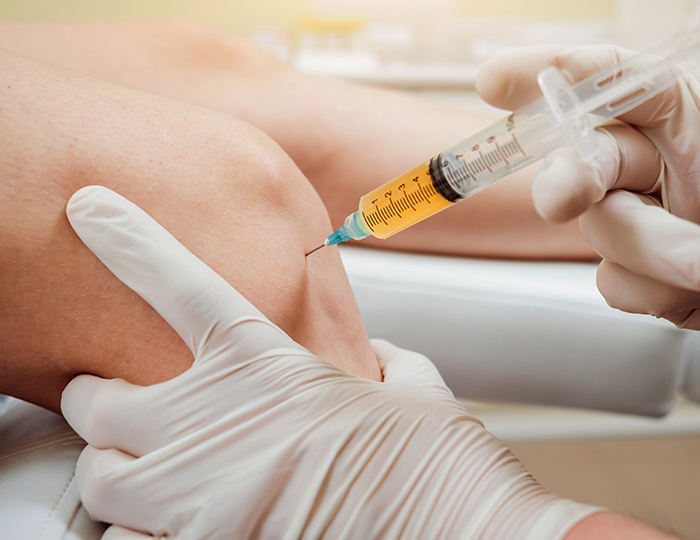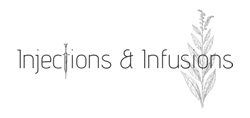Miscellaneous Injections

Lose those annoying bumps and bulges of stubborn fat
Utilized to soothe muscle pain & break the chronic pain cycle
All natural intramuscular injection to abort pending migraines
Regenerative injection therapy for the treatment of scar tissue
Perineural injection therapy treats inflamed and injured nerves
Fat Reduction Injections (aka lipoma mesotherapy)
Non-surgical Lipoma Resolution using a series of subcutaneous injections with tiny needles. A treatment series of 4-6 is generally recommended, each session lasting about an hour. The injections are a specially formulated to dissolve and remove the fat without surgical intervention.
The treatment known as lipoma mesotherapy is, like CoolSculpting®, a nonsurgical alternative to liposuction and a way to lose those annoying bumps and bulges of stubborn fat. It involves a series of localized injections of phosphatidylcholine (PC) with deoxycholate (DC) to reduce superficial deposits of fat. A standard formula with PC and DC as essential ingredients has been used in the United States since 2004, and several hundred physicians have treated thousands of patients. The DC breaks down fat cells, and PC assists the absorption and drainage of released fat and is considered by many people to be an excellent cellulite treatment. It has been shown that when injected in subcutaneous fat, DC alone leads to fat destruction, however, there is less pain, bruising, swelling, and inflammation when combined with PC. Once the fat cells are destroyed, they are slowly and systemically removed, resulting in fat reduction in the treated area. At the same time, newly laid down collagen tightens the overlying skin, resulting in a reduction and noticeable decrease in the appearance of the lipoma.
Patients who have localized benign fatty tumors, called lipomas, will find lipoma mesotherapy, as opposed to surgical excision, an excellent option for addressing this issue. Many times, surgical excision results in scarring, which can look worse than the original fatty lipoma. The lipoma may also return despite the surgical attempts to remove it in its entirety. For giant lipomas greater than 5 or 6 centimetes in diameter, surgery would be quite significant, with scarring to match. Thus, extremely large lipomas are great targets for lipoma mesotherapy.
Typically, lipoma mesotherapy is useful only for injection into non-painful lipomas, which are the majority. If it is a painful lipoma, it is most likely an angiolipoma, and surgical excision is recommended for this type.

Trigger Point Injections
(aka myofascial trigger point therapy)
Trigger points are discrete, hypersensitive muscle pains which are located within a taunt band of muscle fiber. Trigger points can be palpated & feel like a tight bundle of muscle fiber that is more tender & concentrated compared to surrounding tissue. Pain is local, but can also be referred to nearby anatomical structures. Persistent pain generally results in decreased range of motion to the affect muscles; to include those muscles which are utilized to provide posture (spine, hip, neck & shoulder muscles). Trigger points develop due to acute trauma or repetitive micro trauma which stress muscle fibers.
Trigger point injection therapy is utilized to soothe muscle pain & break the chronic pain cycle. A combination of injectable anesthetic, dextrose & vitamins are used to numb & soothe painful muscles; with the goal of inactivating the trigger point. Trigger point injections are a short term therapy. Injections are administered 1-2 weekly for 4-8 weeks, depending on extent & age of injury. The goal is to increase therapeutic responsiveness to other treatment modalities (massage, acupuncture, chiropractic adjustments, regular stretching, exercise) in order to restore pain free functionality of affected muscles and joints.
An injection session begins with an interview, followed by a physical exam to assess your musculoskeletal concerns. Injections into your muscles are performed in a quick procedure, generally patients lie down when these are administered. Anesthetic effects are noticeable within 10-60 minutes. Results last 24-72 hours, depending on extent of injury & number of injections administered. Stretching & mild exercises are encouraged after treatment.
Other treatments for trigger points include acupuncture, massage therapy, chiropractic manipulations, hydrotherapy, physical therapy & therapeutic lasers & ultrasound.
Chronic pain cycle:
With an injury or trauma, our body perceives an immediate onset of pain, this short term onset is called acute pain; if this pain continues, it becomes chronic pain. With pain, we avoid activities & motion which aggravate us, or we continue our normal range of motion, despite the pain, in order to live our lives. This leads to a progressive deconditioning of our body which increases pain perception. This chronic pain cycle is a target of trigger point therapy.
Migraine Resolution
Dr. Rachael utilizes an all-natural intramuscular injection to abort pending migraines, no prescription medications needed. This treatment takes 10 minutes and is available same day. Additionally, Botox® injection therapy is used to prevent migraine headaches. Please sign up for the Botox® Savings Program in order to save money on migraine treatment therapy.
Scar Treatment
PLATELET RICH PLASMA (PRP) INJECTIONS
An innovative regenerative injection therapy technique used to treat scar tissue to aid in collagen remodeling. This therapy involves injecting platelets and growth factors, harvested from a simple blood draw, directly into the scar tissue region. The injected platelets and growth factors activate the tissue repair cycle, which increases wound and tissue healing, leading to regeneration and repair of tissues using the body’s innate healing processes. A numbing agent is utilized during the injections for additional comfort.
Perineural Injection Therapy (PIT)
Perineural Injection Therapy (PIT) is a proven safe, effective treatment for patients who may not be candidates for joint replacement surgery or biologic options such as stem cell injections or PRP. Perineural injection therapy treats inflamed and injured nerves. Chronic nerve pain is often due to trauma, arthritis, sports, overuse, occupational, and surgical injuries.
Any sensation that is perceived by the brain is transmitted to the brain via the sensory nervous system. This is true for sensations like pain, temperature, vibration, or pressure. For example, when a nerve is stimulated by pain, the individual nerve cells generate an electrical current that is carried by the nerve to the spinal cord and then to the brain.
Imagine the individual nerve cell as being a room with a door (scientifically termed a receptor). When the nerve cell is stimulated, the door (receptor) opens and let sodium, potassium, calcium, and other molecules in and out of the cell. When this occurs and moves from one room to the next, an electrical current is created termed an action potential. When the stimulation is complete, the door once again closes. If the nerve is injured for whatever reason, this mechanism is disrupted.
